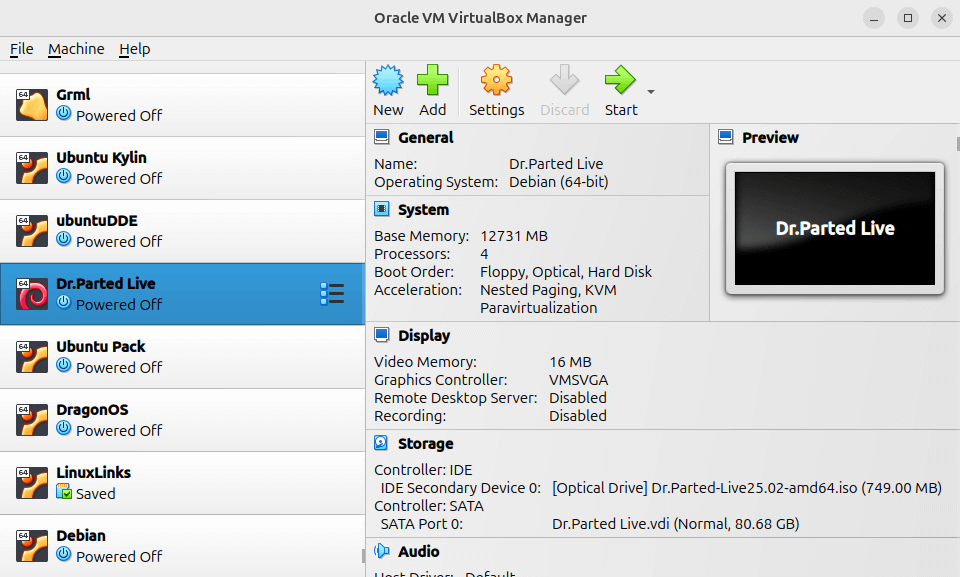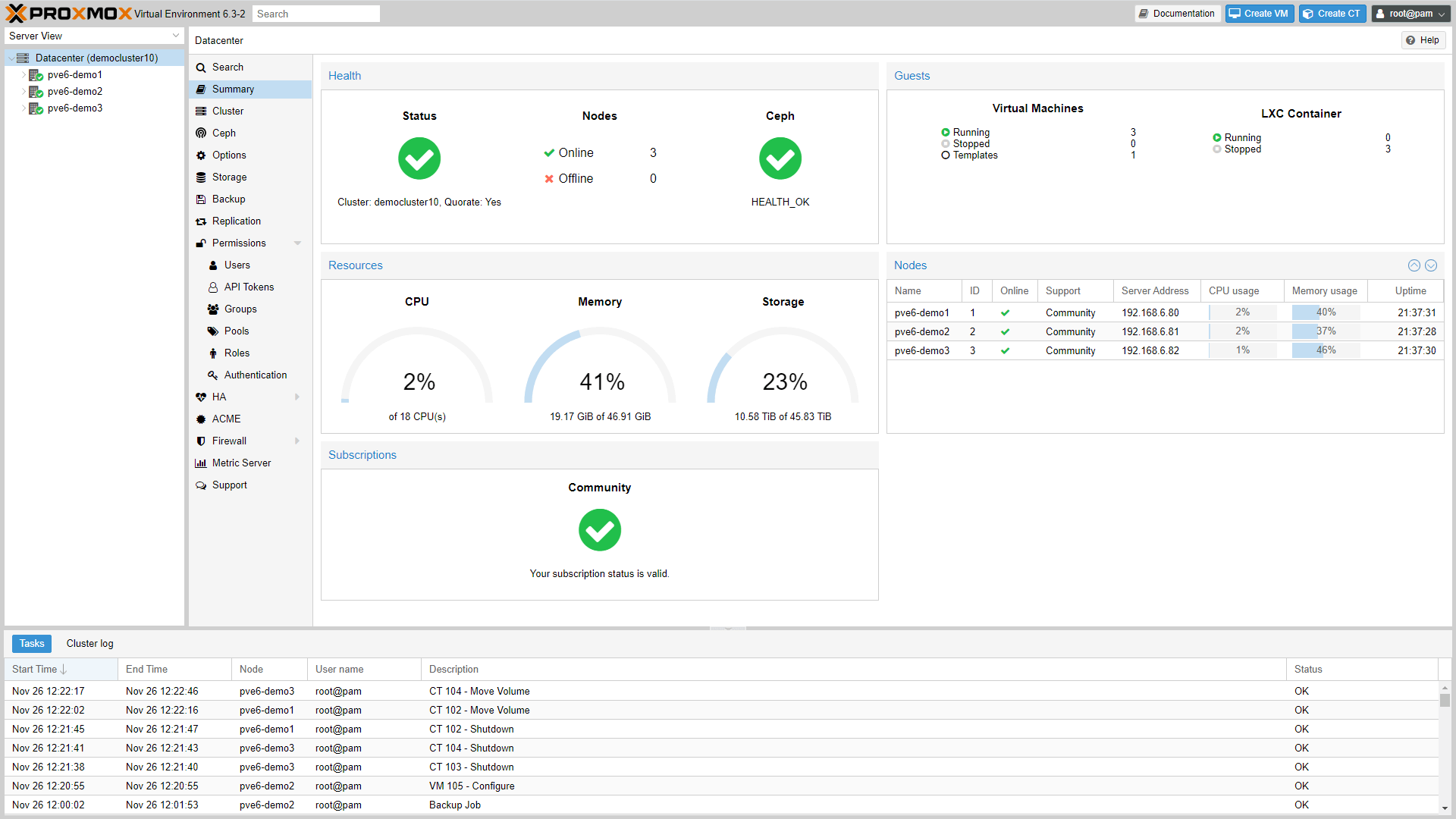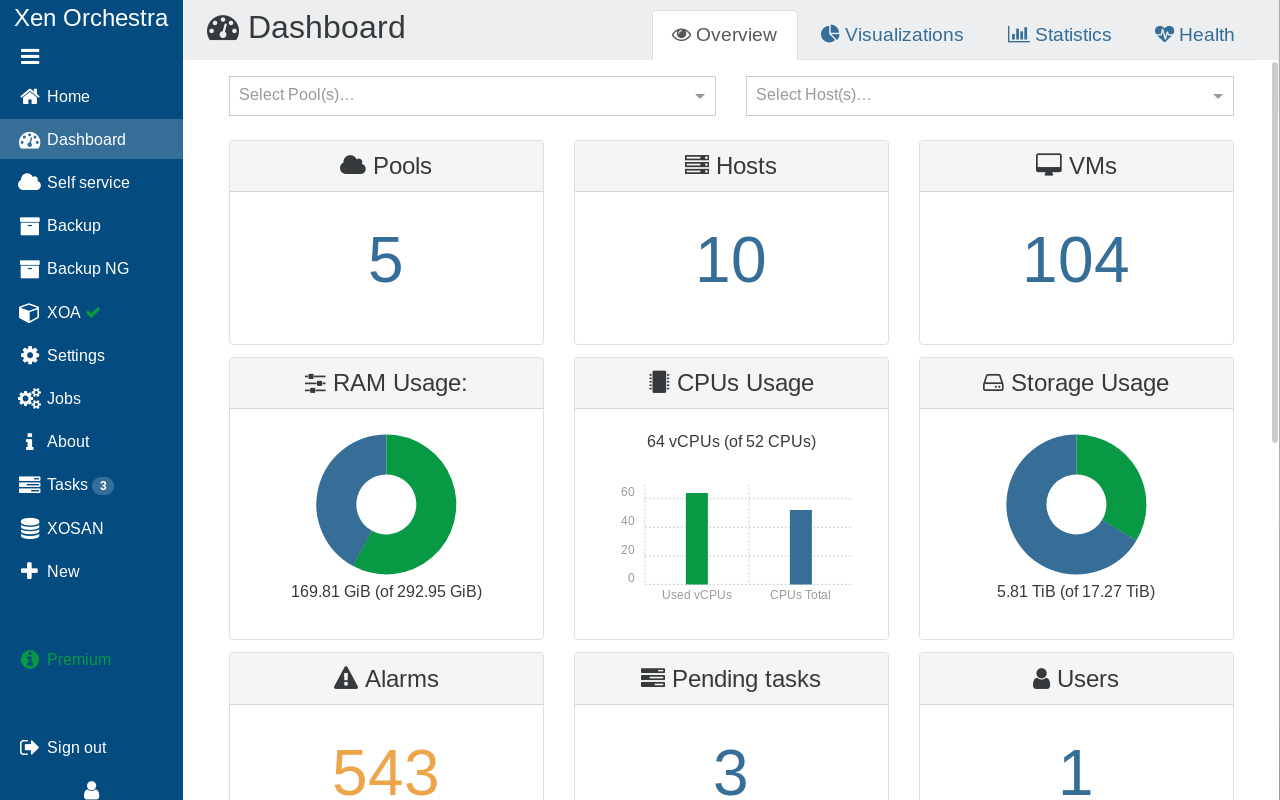Citrix Systems, Inc. is an American multinational cloud computing and virtualization technology company that provides server, application and desktop virtualization, networking, software as a service (SaaS), and cloud computing technologies. It has 60 offices in 40 countries.
![]() XenServer (previously Citrix Hypervisor) is a hypervisor optimized for the Citrix platform. XenServer is proprietary software.
XenServer (previously Citrix Hypervisor) is a hypervisor optimized for the Citrix platform. XenServer is proprietary software.
We recommend the best free and open source alternatives for Linux.
1. VirtualBox
VirtualBox is a general-purpose full virtualization software for x86_64 hardware (with version 7.1 additionally for macOS/Arm), targeted at laptop, desktop, server and embedded use.

2. Proxmox Virtual Environment
Proxmox Virtual Environment is an open-source server virtualization management platform.
It is a Debian-based Linux distribution with a modified Ubuntu LTS kernel and allows deployment and management of virtual machines and containers.
Proxmox VE includes a web console and command-line tools, and provides a REST API for third-party tools. Two types of virtualization are supported: container-based with LXC, and full virtualization with KVM. It comes with a bare-metal installer and includes a web-based management interface.

3. XCP-ng
XCP-ng is a high performance enterprise level virtualization platform with a rich ecosystem. XCP-ng stands for Xen Cloud Platform – New Generation.
XCP-ng was originally based on XenServer, Citrix Hypervisor.

4. KVM
KVM (for Kernel-based Virtual Machine) is a full, open source, virtualization solution for Linux on x86 hardware containing virtualization extensions (Intel VT or AMD-V).
It consists of a loadable kernel module, kvm.ko, that provides the core virtualization infrastructure and a processor specific module, kvm-intel.ko or kvm-amd.ko. KVM also requires a modified QEMU although work is underway to get the required changes upstream.
5. Xen
Xen is an Virtual Machine Monitor (VMM) originally developed by the Systems Research Group of the University of Cambridge Computer Laboratory, as part of the UK-EPSRC funded XenoServers project.
Xen can securely execute multiple virtual machines, each running its own operating system, on a single physical system with close-to-native performance.
All articles in this series:
| Alternatives to Citrix's Products | |
|---|---|
| Podio is a cloud-based collaboration platform that helps businesses organize work, manage projects, and streamline workflows. | |
| Wrike is a collaborative work management solution. This allows end users to become even more productive and be able to stay on track of projects. | |
| XenServer (previously Citrix Hypervisor) is a hypervisor optimized for the Citrix platform. | |

Why isn’t XCP-ng (xcp-ng.org) mentioned – it is the continuation of the Citrix XenServer that has continued as a standalone product (FOSS and enterprise versions + support etc.) after Citrix abandoned their version/vision.
XCP-ng compares mostly to ESXi but is somewhat easier to get started with, for newcomers, than e.g. Proxmox or vanilla Xen or KVM and does all the same things (except LXC like Proxmox does).
Agreed, XCP-ng is included.